How to Update ownCloud
Introduction
This page shows how to update an ownCloud installation hosted on an ownCloud X Appliance:
|
Do not use ownCloud’s built-in Web Updater! |
Use the Univention Management Console
Using the Univention Management Console, there are two paths to upgrade an existing ownCloud installation:
In-place Upgrade (for 10.0 users)
To perform an in-place upgrade, after logging in to the Univention server, under "Administration", click the first option labeled System and domain settings. This takes you to the Univention Management Console. From there, click the Software shortcut (1), and then click Software update (2).
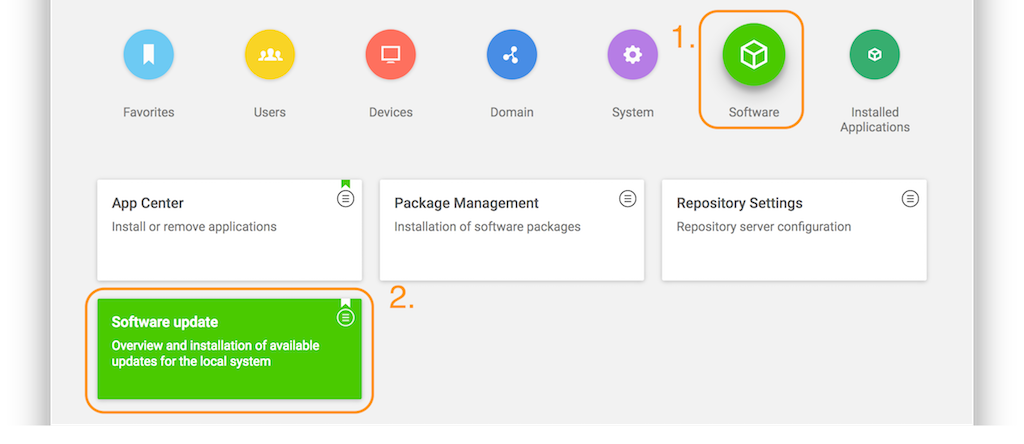
This will load the Software update management panel, after a short time scanning for available updates. If an update is available, under "App Center updates" you will see "There are App Center updates available". If one is, as in the image below, click ownCloud which takes you to the ownCloud application.
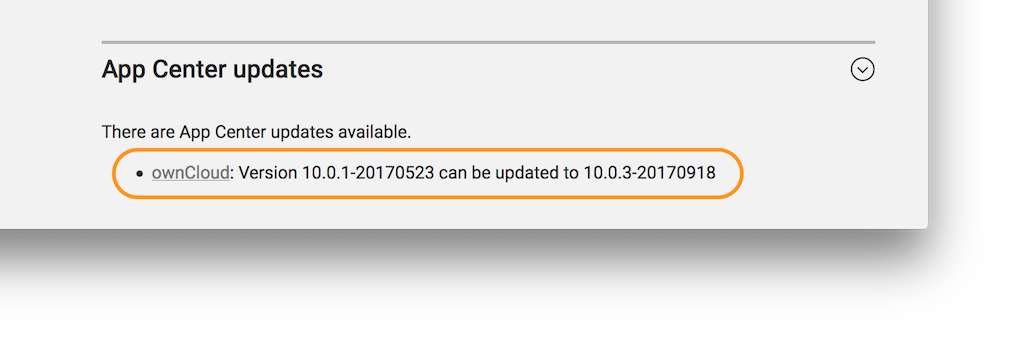
When there, part-way down the page you’ll see the "Manage local installation" section. Under there, click UPGRADE.
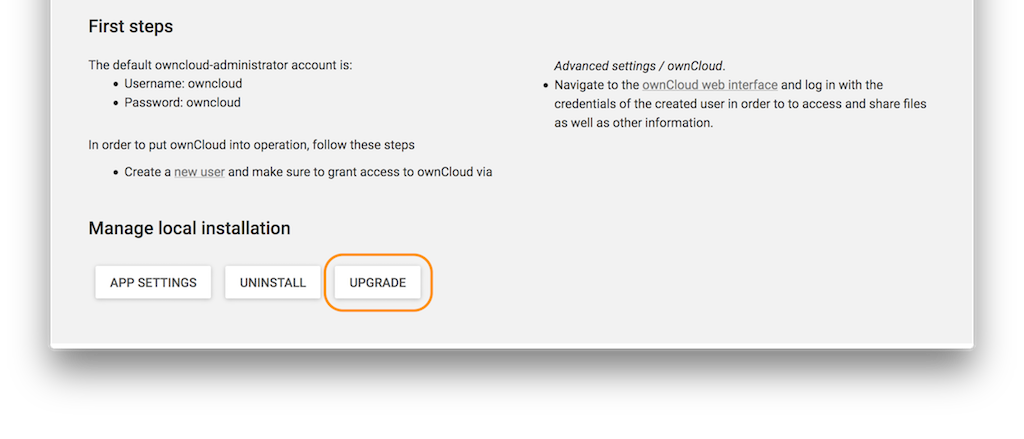
Before the upgrade starts, a prompt appears titled "App Installation notes". This is nothing to be concerned about. So check the checkbox Do not show this message again. Then click CONTINUE.

Next an upgrade confirmation page appears. To accept the confirmation, click UPGRADE on the far right-hand side of the confirmation page.

This launches the upgrade process, which requires no manual intervention. When the upgrade completes, the ownCloud app page will be visible again, but without the UPGRADE button. Now, login to ownCloud by clicking the OPEN button, on the far right-hand side of the page.
Uninstall the Existing Version and Install the New Version (for 9.1 users)
Open your ownCloud X Appliance and go to the "System and Domain Settings" dashboard. Then, after logging in, click Installed Applications, and then click ownCloud.
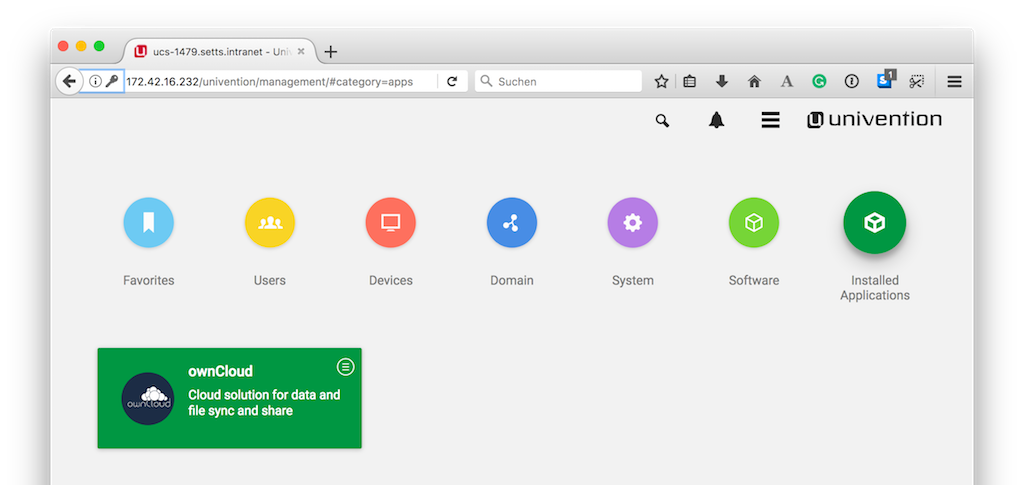
This takes you to the ownCloud app settings page. From there, begin uninstalling ownCloud by clicking UNINSTALL under "Manage local installations"

This takes you to an uninstall confirmation page. On that page, click UNINSTALL on the lower left-hand side of the page.
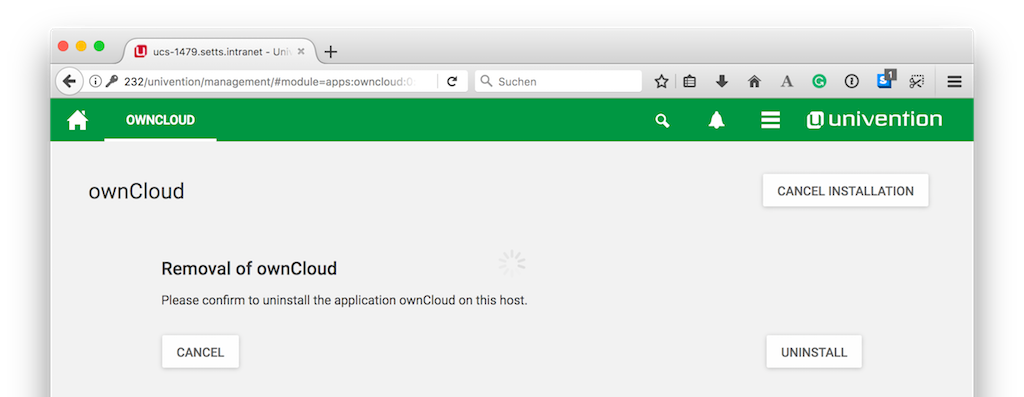
Follow the process until it’s finished. Then, click on Close in the upper right corner.
Your data and users will remain.
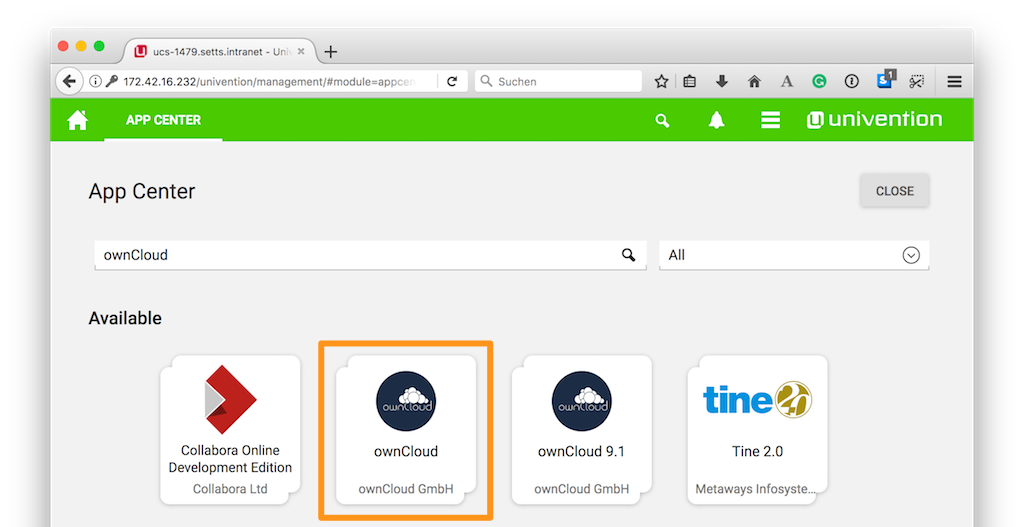
Following that, go to "Software - Appcenter", and search for
ownCloud. At the moment, two matching results will be returned.
Pick the one that does not contain a version number.
To confirm the version number, scroll to the bottom of the page, and in the More information section, look for the version string, next to Installed version, as in the screenshot below.
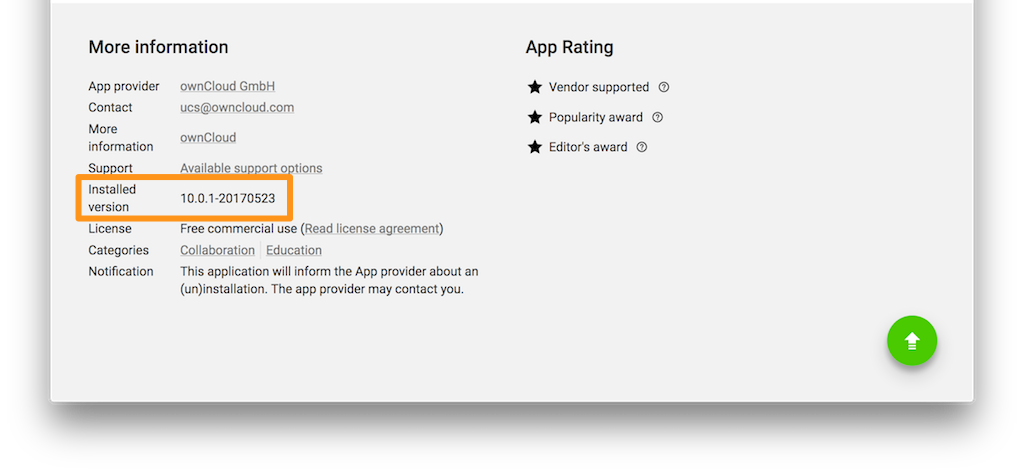
If it is the right version, click INSTALL. Then the License Agreement is displayed. If you agree to it, click ACCEPT LICENSE. This will display an installation confirmation screen. To confirm the installation, click INSTALL.
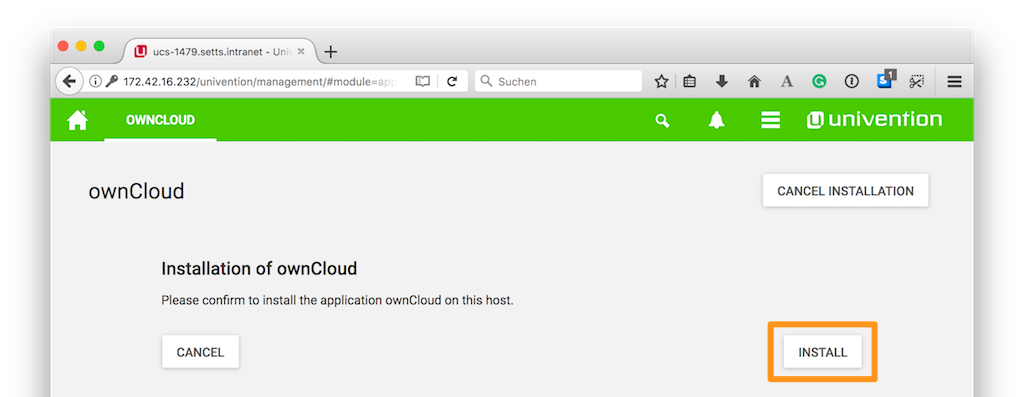
The installation will then be carried out. When it is finished, you will have the latest version of ownCloud installed.
Your data and users will persist.
Use the Command Line
As with the Univention Management Console, there are two paths to upgrade an existing ownCloud installation from the command line:
Upgrading From Version 10.0.1 to 10.0.3
Upgrading from the command line is also available. To do so, login to your ownCloud X Appliance, either via ssh or directly on the server. Once logged in, check if there is an upgrade available.
You can use the command univention-app info. This command lists
information about the current state of every installed App.
root@ucs-9446:~# univention-app infoUCS: 4.2-1 errata165
App Center compatibility: 4
Installed: 4.1/owncloud=10.0.1-20170523
Upgradable: owncloudIf an upgrade is available, you then need to run the
univention-app upgrade, as in the example below.
root@ucs-9446:~# univention-app upgrade owncloudYou will have to enter your Administrator password to start the upgrade. This command takes some time to complete, primarily based on the appliance’s network connection speed. However, it should not take more than a few minutes.
After the upgrade has completed (if it was successful) as a sanity
check, run univention-app info, to confirm the currently installed
version of ownCloud. As in the example below, you should see that the
installed version is now higher than before, and that ownCloud is no
longer upgradable.
root@ucs-9446:~# univention-app infoUCS: 4.2-1 errata165
App Center compatibility: 4
Installed: 4.1/owncloud=10.0.3-20170918
Upgradable:Upgrading From Versions Prior to 10.0
If you’re running a version of ownCloud prior to 10.0, the above
in-place upgrade doesn’t work. This is because the earlier versions of
ownCloud are installed with a different application to the 10.x version.
More specifically, the versions of the ownCloud app, prior to 10, have a
version suffix in the name. For example the ownCloud 8.2 app is named
owncloud82.
For ownCloud 8.2 users: during the ownCloud App upgrade, user files will be moved to the new Docker data directory, /var/lib/univention-appcenter/apps/owncloud/data/files. Essentially, the following the command will be executed:
mv /var/lib/owncloud/* /var/lib/univention-appcenter/apps/owncloud/data/filesPlease check your filesystems and mountpoints and make sure enough space is available for the operation.
Given that, you first have to uninstall the existing version and then install the 10.x version. To do so, run the following commands:
The following assumes that owncloud82 is the currently installed version
univention-app remove owncloud82
univention-app update
univention-app install owncloudAnd after the upgrade and updates are completed, you can then login to ownCloud and verify the upgrade. Username and Password remain the same as before the upgrade:
-
owncloudadmin -
password